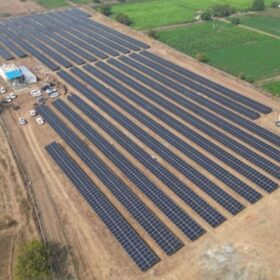How Gujarat is balancing industrial and environmental goals
Gujarat’s commitment to balancing industrial growth with environmental sustainability is a model for other states to follow. By harnessing solar energy, advancing green hydrogen production, and promoting energy storage technologies, the state is building a robust framework for a sustainable future.
PV module prices at crossroads
Martin Schachinger, founder of pvXchange.com, said PV module prices will depend on national and international demand trends in the coming months, with outcomes ranging from increases to stagnation or further declines. Almost anything is possible, but nothing is certain.
Union Budget 2025-26: What India’s green industry expects from the upcoming budget
The 2025-26 Union Budget has the potential to be a defining moment in India’s journey toward a net-zero economy. By addressing key areas such as renewable energy, green hydrogen, sustainable mobility, and community-level projects, the government can create a robust framework for decarbonization.
Global solar module prices mixed on varying demand expectations
In a new weekly update for pv magazine, OPIS, a Dow Jones company, provides a quick look at the main price trends in the global PV industry.
Optimizing photovoltaic systems: Best practices for economic, technical key performance indicators
As the global solar energy industry grows, so does the need for accurate monitoring of performance and financial viability. The latest report by IEA PVPS Task 13, “Best Practice Guidelines for the Use of Economic and Technical KPIs,” provides a comprehensive framework to address this issue. This article explores the importance, methodologies, and applications of Key Performance Indicators (KPIs), with a focus on their role in optimizing PV systems.
AI and Data Analytics in energy operations
Artificial intelligence (AI) and Data Analytics are transforming energy operations by introducing capabilities that were once unimaginable. These technologies provide actionable insights, automate processes, and enable real-time decision-making, making energy systems smarter and more resilient.
Middle-mile logistics: Why commercial EVs are the missing link in sustainable supply chains
As dark stores move closer to consumers to reduce turnaround times, the demand for frequent, efficient restocking has surged. This shift has brought the middle mile into focus as a space ripe for innovation, particularly through the integration of commercial electric vehicles (EVs).
GPM awaits tariff support, Chinese polysilicon futures injects boost
In a new weekly update for pv magazine, OPIS, a Dow Jones company, provides a quick look at the main price trends in the global PV industry.
The ease of financing in the solar sector
Innovative models that provide pay-as-you-go solar systems, peer-to-peer energy trading, and crowdfunding platforms could expand access to renewable energy for underserved communities.
The shift to advanced battery technologies for a sustainable future
With the growing integration of renewable energy solutions in power grids, the demand for efficient energy storage solutions is only set to grow. Taking cognizance of the advancements in battery technology, India today stands at the cusp of a major revolution.















